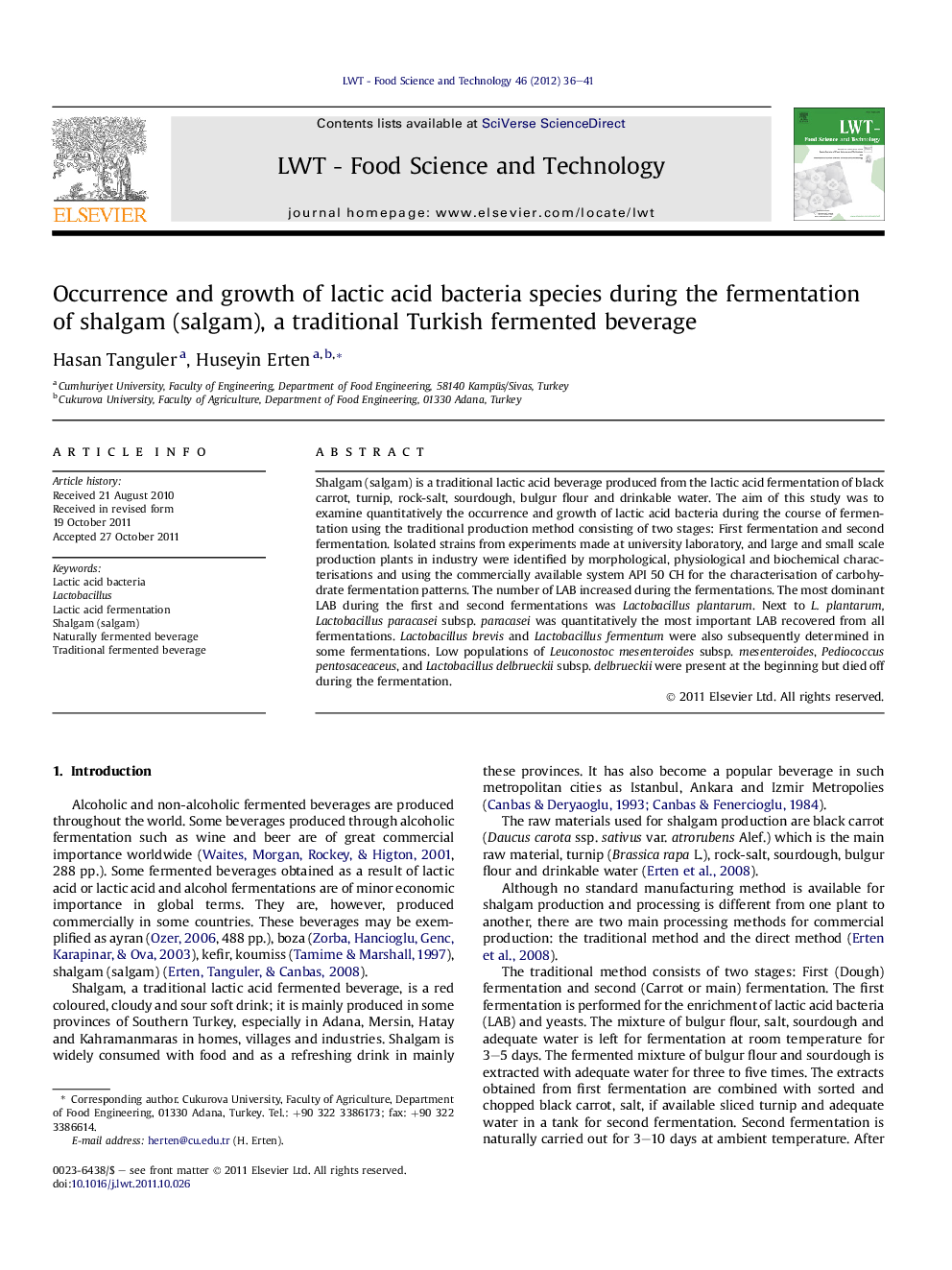| Article ID | Journal | Published Year | Pages | File Type |
|---|---|---|---|---|
| 6405342 | LWT - Food Science and Technology | 2012 | 6 Pages |
Shalgam (salgam) is a traditional lactic acid beverage produced from the lactic acid fermentation of black carrot, turnip, rock-salt, sourdough, bulgur flour and drinkable water. The aim of this study was to examine quantitatively the occurrence and growth of lactic acid bacteria during the course of fermentation using the traditional production method consisting of two stages: First fermentation and second fermentation. Isolated strains from experiments made at university laboratory, and large and small scale production plants in industry were identified by morphological, physiological and biochemical characterisations and using the commercially available system API 50 CH for the characterisation of carbohydrate fermentation patterns. The number of LAB increased during the fermentations. The most dominant LAB during the first and second fermentations was Lactobacillus plantarum. Next to L. plantarum, Lactobacillus paracasei subsp. paracasei was quantitatively the most important LAB recovered from all fermentations. Lactobacillus brevis and Lactobacillus fermentum were also subsequently determined in some fermentations. Low populations of Leuconostoc mesenteroides subsp. mesenteroides, Pediococcus pentosaceaceus, and Lactobacillus delbrueckii subsp. delbrueckii were present at the beginning but died off during the fermentation.
⺠The evolution of lactic acid bacteria microbiota of shalgam was examined. ⺠L. plantarum was the most dominant bacterium during fermentations. ⺠L. paracasei was the second important bacterium. ⺠L. brevis and L. fermentum are also involved at significant levels in fermentations. ⺠Isolated bacteria will be source to select a starter for shalgam fermentations.
